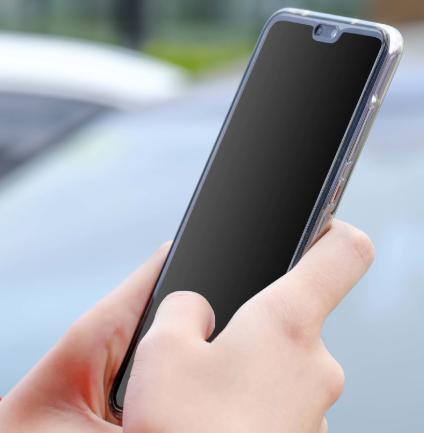Navigating the Lifeline Phone Program: Eligibility, Providers, and How to Apply
For millions of low-income Americans, a Lifeline phone is more than a convenience—it’s a critical tool for daily life. Whether used to call a doctor, check in with a child’s school, or apply for a job, these subsidized devices and service plans bridge the gap between financial hardship and essential connectivity.

However, navigating the Lifeline Phone Program can be confusing for first-time applicants. This guide breaks down the key details: who qualifies, how to apply, and what to expect from participating providers.
Understanding Eligibility: Who Can Get a Lifeline Phone?
The Lifeline Phone Program is designed to assist households with limited income, but eligibility is strictly regulated by the FCC. To qualify, you must meet one of two criteria:
Income-Based Eligibility: Your household income must be at or below 135% of the Federal Poverty Guidelines. These guidelines are updated annually and vary by household size. For example, in 2024, a single-person household must earn $19,320 or less, while a family of four qualifies with an income of $40,620 or less.
Program Participation: You or a member of your household participates in a qualifying federal assistance program. These include Medicaid, Supplemental Nutrition Assistance Program (SNAP), Supplemental Security Income (SSI), Federal Public Housing Assistance (FPHA), Veterans Pension and Survivors Benefit, or tribal-specific programs like Tribal TANF or Bureau of Indian Affairs General Assistance.
It’s important to note that only one Lifeline benefit is allowed per household, regardless of how many members qualify. This rule prevents fraud and ensures resources are distributed fairly. Additionally, you must provide proof of eligibility, such as pay stubs, tax returns, or a letter of participation in a qualifying program.
Choosing a Provider: What to Look For
Lifeline phones and service plans are offered by private companies, not the government itself. These providers are approved by the FCC and vary by state, so options depend on your location. When comparing providers, consider the following:
Device Quality: Most providers offer free smartphones (often entry-level models) with basic features like cameras, touchscreens, and app compatibility. Some may also offer refurbished devices in good condition.
Service Inclusions: Plans typically include a set number of monthly minutes, texts, and data. For example, many providers offer 1,000 minutes, unlimited texts, and 5GB of data per month at no cost. Some now include unlimited talk and text with 10GB of data, especially in states with higher demand.
Network Coverage: Check if the provider uses a reliable network in your area. Major carriers like Verizon, AT&T, and T-Mobile often partner with Lifeline providers, ensuring better coverage than smaller networks.
Additional Fees: While basic plans are free, some providers charge for extra data, international calls, or device upgrades. Read the fine print to avoid unexpected costs.
Popular Lifeline providers include Assurance Wireless, Safelink Wireless, and TruConnect, each with a presence in most states. Many also offer bilingual support and online account management, making it easier to track usage or request help.
How to Apply: A Step-by-Step Guide
Applying for a Lifeline phone is straightforward, and most providers offer online, mail, or in-person options. Here’s what to do:
Gather Documentation: Collect proof of eligibility, such as:
A recent pay stub or tax return (for income-based qualification).
A letter from a qualifying program (e.g., Medicaid or SNAP) showing current enrollment.
A government-issued ID to verify your identity and address.
Select a Provider: Visit the FCC’s Lifeline Program website (fcc.gov/lifeline) to find approved providers in your state. Many providers also have user-friendly websites with eligibility checkers.
Submit Your Application:
Online: Most providers allow online applications, which are processed fastest (often within 1–3 business days). You’ll upload scanned copies of your documents.
By Mail: Print and mail the application form (available on the provider’s website) along with photocopies of your documents. This may take 1–2 weeks.
In Person: Some providers partner with local community centers or stores (e.g., Walmart) where you can apply in person with help from staff.
Wait for Approval: Once submitted, your application will be reviewed for eligibility. If approved, you’ll receive your Lifeline phone via mail within 5–7 business days, along with instructions to activate it.
Recertify Annually: To keep your Lifeline benefits, you must confirm your eligibility once a year. Providers will send reminders, and you can recertify online, by phone, or by mail. Failing to recertify will result in service termination.
Common Myths and Misconceptions
Despite its popularity, the Lifeline Phone Program is often misunderstood. Let’s debunk some myths:
Myth: Lifeline phones are "free government phones."
Fact: The government subsidizes the cost, but phones and service are provided by private companies.
Myth: Only unemployed people qualify.
Fact: Many working families with low incomes qualify, as long as they meet the income or program criteria.
Myth: Lifeline phones are low-quality and outdated.
Fact: Most providers offer basic smartphones capable of internet access, apps, and video calls—enough for essential needs.
Myth: Applying is complicated and time-consuming.
Fact: Online applications take minutes, and approval is often quick, especially with clear documentation.
Final Tips for Success
Compare Plans: Don’t settle for the first provider you find. Compare data limits, coverage, and customer reviews to find the best fit.
Keep Records: Save copies of your application and approval letter in case of service issues.
Report Changes: If your income or program participation changes, notify your provider immediately to avoid losing benefits.
For low-income households, a Lifeline phone is more than a device—it’s a lifeline to opportunity. By understanding the eligibility rules, choosing the right provider, and following the application steps, you can access this vital resource and stay connected to the people and services that matter most.